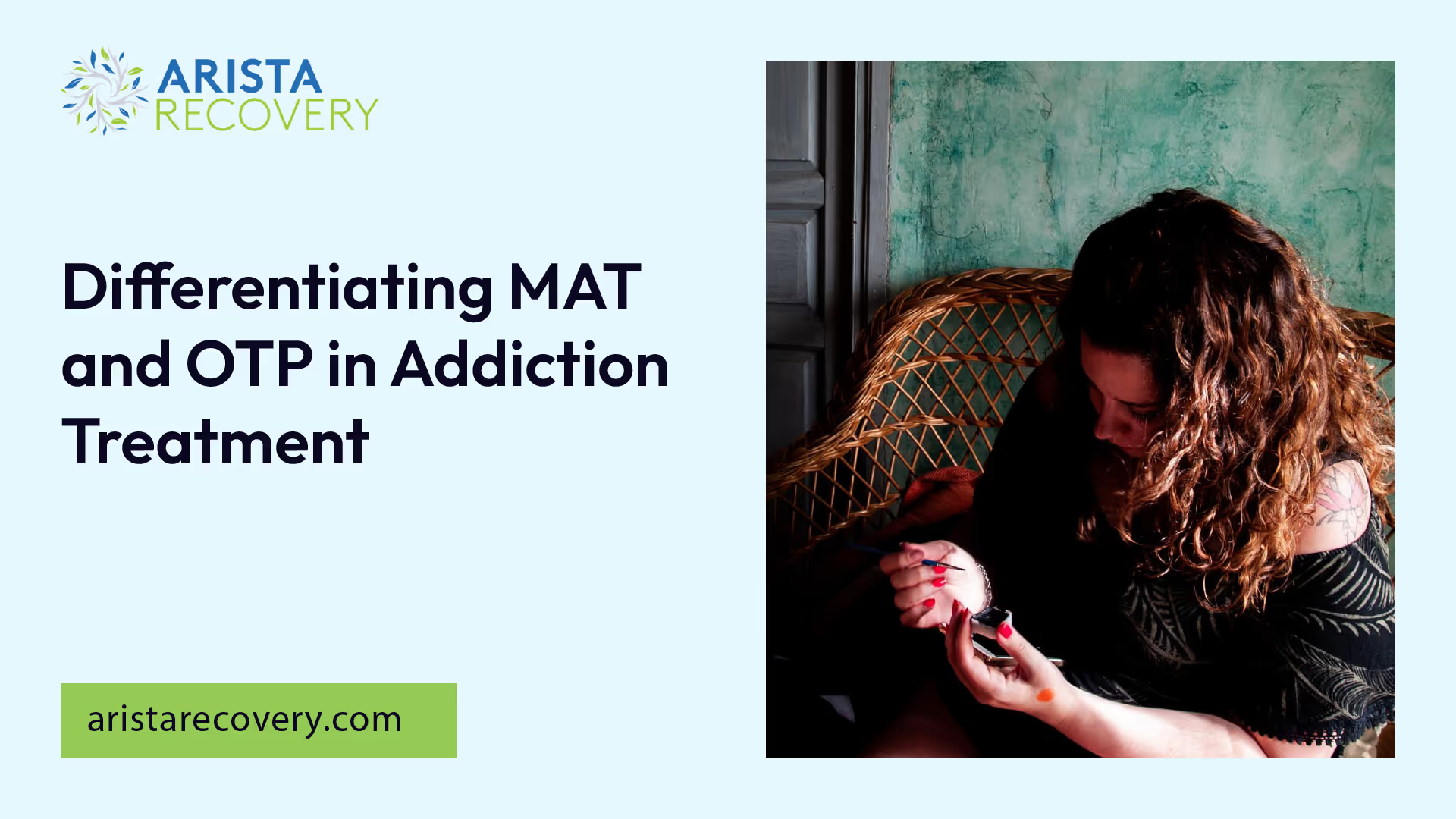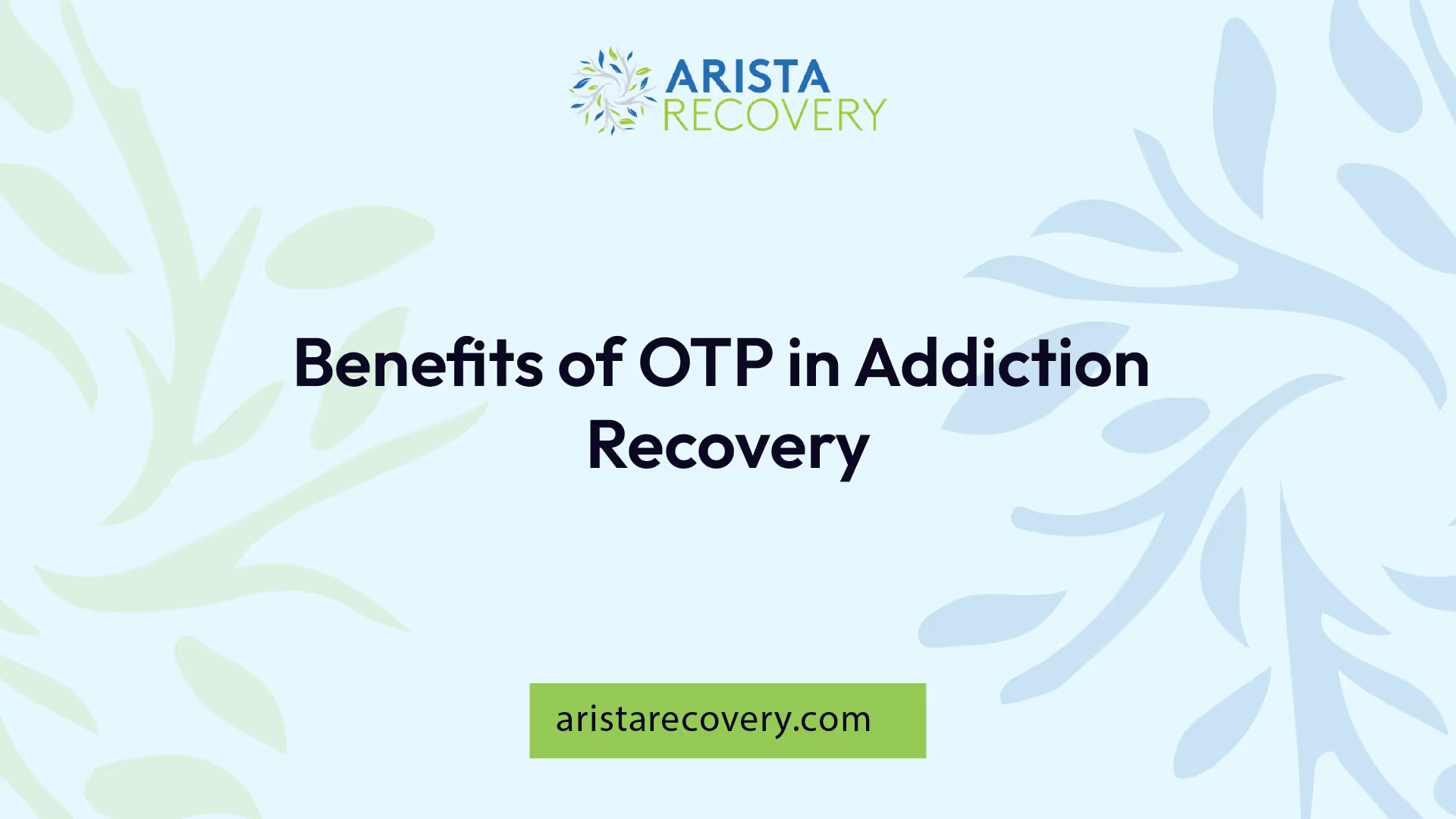Differentiating MAT and OTP in Addiction Treatment


Understanding Medication Assisted Treatment
When overcoming addiction, individuals often require a comprehensive treatment plan that may include medication-assisted treatment (MAT). Understanding MAT is crucial to discern its role in addiction treatment and how it differs from other programs like OTP.
Introduction to MAT
Medication Assisted Treatment (MAT) is an effective approach to treating substance use disorders by combining medication with counseling and behavioral therapies. This method allows for a comprehensive, "whole-patient" approach to treatment, addressing the physical, psychological, and social aspects of addiction. More information about MAT can be found in our article about medication assisted treatment.
Importance of MAT in Addiction Treatment
MAT plays a crucial role in addiction treatment, as it helps reduce withdrawal symptoms and cravings associated with substance use disorders. This makes it easier for individuals to focus on recovery and reduces the risk of relapse. However, it's important to note that MAT is most effective when used as part of a broader treatment plan that includes counseling and other supportive services.
In the United States, access to and utilization of MAT for Opioid Use Disorder (OUD) vary geographically. For example, buprenorphine use is highest in the Northeast and lowest in states like South Dakota, Iowa, and Kansas. These geographical disparities highlight the need for increased access to MAT in underserved areas [1].
Despite its effectiveness, stigma towards MAT remains a significant barrier to its implementation. There's pervasive stigma among various groups, including physicians, clinic staff, patients, law enforcement, policymakers, insurers, and the community at large. Overcoming this stigma is a critical step in increasing access to MAT and improving outcomes for individuals with substance use disorders.
In conclusion, understanding MAT is the first step in understanding the difference between MAT and OTP. As you continue to explore your options, remember to consider the comprehensive nature of MAT and its proven effectiveness in treating addiction.

Difference between MAT and OTP
Deciphering the difference between Medication Assisted Treatment (MAT) and Opioid Treatment Programs (OTP) can be critical in deciding the most appropriate treatment pathway for people seeking help with opioid addiction. Both MAT and OTP are aimed at combating opioid addiction, but their approaches to achieving this goal can differ significantly.
Exploring MAT Programs
Medication Assisted Treatment (MAT) is a comprehensive approach to treating substance use disorders, including opioid addiction. MAT combines the use of FDA-approved medications with counseling and behavioral therapies to provide a "whole-patient" approach to the treatment of substance use disorders.
One type of MAT program is Office-based Opioid Treatment (OBOT). OBOT programs allow primary care practitioners to prescribe FDA-approved medications for opioid use disorder. This enables patients to self-dispense the medication at home, with periodic check-ins at a medical center [3].
OBOT programs offer the convenience of self-dispensing prescription medication at home, combined with periodic check-ins with medical providers, and substance use counseling in individual and group settings for long-lasting recovery. However, it requires a high level of patient responsibility, potentially increasing the risk of relapse.
Unveiling OTP Programs
On the other hand, Opioid Treatment Programs (OTP) are structured treatment programs involving accredited clinicians who can prescribe FDA-approved medication-assisted treatment drugs like methadone, buprenorphine, and naltrexone for opioid use disorder.
OTP programs offer a structured and integrated care model that combines Medication-Assisted Treatment (MAT) with counseling and other support services, ensuring holistic care addressing physical, psychological, and social aspects of addiction.
OTP programs provide individuals with the tools and support necessary for successful, long-term recovery through their structured care model, specialized staff, enhanced accountability, and focus on community and peer support. Choosing OTP over OBOT can significantly impact the lives of those struggling with opioid dependency, offering a path to a healthier, happier future [4].
In conclusion, while both MAT and OTP programs aim to address opioid addiction, they differ in their approach, structure, and level of patient responsibility. It's crucial for individuals seeking treatment to understand these differences to make an informed decision about their recovery pathway. Learn more about the outcomes of MAT and the differences between MAT and other substance use disorder treatments in our other articles.

Benefits of OTP in Addiction Recovery
In the context of addiction recovery, OTP refers to Opioid Treatment Programs (OTPs), which play a crucial role in providing support and treatment for individuals dealing with opioid addiction. These programs are essential in ensuring the well-being and recovery of patients struggling with opioid dependency.
Importance of OTPs in Addiction Recovery
Opioid Treatment Programs (OTPs) are lifelines for individuals seeking recovery from opioid addiction. These programs offer a comprehensive approach to treatment, including medication-assisted therapy, counseling, and support services tailored to each patient's needs. By providing a structured environment and specialized care, OTPs help individuals navigate the challenges of addiction recovery effectively.
Benefits of OTPs
- Specialized Care: OTPs offer individualized treatment plans that address the unique needs of each patient, promoting effective recovery outcomes.
- Medication-Assisted Therapy: Through the use of medications like methadone or buprenorphine, OTPs help manage withdrawal symptoms and cravings, supporting patients in their journey towards sobriety.
- Support Services: In addition to medical treatment, OTPs provide counseling, behavioral therapies, and support groups to address the psychological aspects of addiction and promote long-term recovery.
- Reduced Risk of Relapse: By combining medication-assisted therapy with comprehensive support services, OTPs significantly reduce the likelihood of relapse and support sustained recovery.
The Role of OTPs in Promoting Recovery
Opioid Treatment Programs (OTPs) serve as a cornerstone in addiction recovery by offering evidence-based treatment approaches that prioritize patient well-being and recovery. Through a combination of medical intervention, counseling, and ongoing support, OTPs empower individuals to overcome opioid addiction and rebuild their lives.
For more information on the benefits of Opioid Treatment Programs (OTPs) in addiction recovery, feel free to explore resources from reputable sources such as SAMHSA.
Common Medications Used in MAT and Their Mechanisms of Action
Understanding Medication Assisted Treatment
In Medication Assisted Treatment (MAT) for substance use disorders, several medications play a crucial role in helping individuals manage withdrawal symptoms, reduce cravings, and support their journey to recovery. These medications target specific neurotransmitters and receptors in the brain to counteract the effects of drugs and alcohol.
Overview of Common Medications
- Methadone: Methadone is a long-acting opioid agonist that helps alleviate withdrawal symptoms and cravings by binding to opioid receptors in the brain. It reduces the euphoric effects of other opioids, making it easier for individuals to taper off these substances.
- Buprenorphine: Buprenorphine is a partial opioid agonist that activates opioid receptors but to a lesser extent than full agonists like heroin or oxycodone. This medication helps stabilize individuals by reducing cravings and withdrawal symptoms without producing the same intense high.
- Naltrexone: Naltrexone is an opioid antagonist that blocks opioid receptors, preventing the euphoric effects of opioids if they are used. By blocking these receptors, naltrexone reduces the reinforcing effects of opioids, discouraging their misuse.
Understanding how these medications work at the neurobiological level can provide insight into their effectiveness in supporting addiction recovery within the framework of Medication Assisted Treatment (MAT).
Success Rates of MAT Compared to Other Addiction Treatment Methods
Evaluating Treatment Outcomes
When examining the success rates of Medication Assisted Treatment (MAT) in comparison to other addiction treatment methods, it's essential to consider various factors that contribute to treatment efficacy and long-term recovery. Studies have shown that MAT can significantly improve outcomes for individuals with substance use disorders, particularly opioid addiction.
MAT Success Rates
- Reduced Relapse Rates: Research indicates that MAT is associated with lower relapse rates compared to non-pharmacological interventions. By addressing both the physical and psychological aspects of addiction, MAT helps individuals maintain sobriety and reduce the risk of returning to substance use.
- Improved Retention in Treatment: MAT has been shown to increase retention rates in treatment programs, indicating better engagement and adherence to therapy over time. This continuity of care enhances the effectiveness of treatment and supports sustained recovery.
- Enhanced Quality of Life: Individuals receiving MAT often report improvements in their overall quality of life, including better social functioning, reduced criminal behavior, and increased employment opportunities. These positive outcomes contribute to long-term recovery and well-being.
Comparative Analysis
When comparing MAT to traditional addiction treatment methods that do not incorporate medication-assisted therapy, several key differences emerge in terms of success rates and treatment outcomes:
- Higher Efficacy: MAT has demonstrated higher efficacy in reducing cravings, managing withdrawal symptoms, and preventing relapse compared to non-pharmacological interventions alone.
- Long-Term Sustainability: The comprehensive nature of MAT, which combines medication with counseling and behavioral therapies, promotes sustainable recovery by addressing multiple facets of addiction simultaneously.
- Evidence-Based Practices: MAT is supported by a substantial body of evidence highlighting its effectiveness in treating substance use disorders. This evidence-based approach contributes to higher success rates and improved patient outcomes.
By analyzing success rates and statistics related to Medication Assisted Treatment (MAT) compared to other addiction treatment methods, it becomes evident that MAT offers a valuable tool in combating substance use disorders and supporting individuals on their path to recovery.
Addressing Misconceptions About MAT
Myth: MAT Simply Substitutes One Addiction for Another
Rebuttal: Contrary to this belief, Medication Assisted Treatment (MAT) utilizes FDA-approved medications to stabilize brain chemistry, reduce cravings, and manage withdrawal symptoms. These medications are carefully administered under medical supervision as part of a comprehensive treatment plan that includes counseling and behavioral therapies. MAT aims to restore balance in brain function disrupted by substance use, promoting recovery rather than perpetuating addiction.
Myth: MAT is a "One-Size-Fits-All" Approach
Rebuttal: MAT is tailored to individual needs based on factors like the type of substance use disorder, medical history, and response to specific medications. Healthcare providers conduct thorough assessments to determine the most suitable medication and dosage for each patient. This personalized approach ensures that treatment aligns with the unique circumstances and goals of individuals seeking recovery.
Myth: MAT is Only for Severe Cases of Addiction
Rebuttal: While MAT is beneficial for severe cases of addiction, it can also be effective for moderate or mild substance use disorders. By addressing both physical and psychological aspects of addiction, MAT offers a versatile treatment option that can support individuals at various stages of their recovery journey. Early intervention with MAT can prevent the escalation of substance misuse and improve long-term outcomes.
Myth: Once You Start MAT, You Can Never Stop
Rebuttal: The duration of Medication Assisted Treatment varies depending on individual progress and treatment goals. Some individuals may transition off medication gradually as they stabilize in recovery, while others may benefit from long-term maintenance therapy. The decision to discontinue MAT is made collaboratively between patients and healthcare providers based on readiness, stability, and ongoing support systems in place.
By dispelling these misconceptions about Medication Assisted Treatment (MAT) through evidence-based rebuttals, we aim to promote understanding and acceptance of this effective approach in combating substance use disorders.
References
You’re not alone in this.
When mental health challenges and addiction intersect, it can feel isolating. At Arista, we offer compassionate, evidence-based, and trauma-informed care to help you heal, grow, and move forward.
You’re not alone in this.
When mental health challenges and addiction intersect, it can feel isolating. At Arista, we offer compassionate, evidence-based, and trauma-informed care to help you heal, grow, and move forward.
Support that moves with you.
You’ve taken a brave first step. At Arista Recovery, we’re here to help you continue with best-in-class care designed for long-term healing and support.
.webp)






